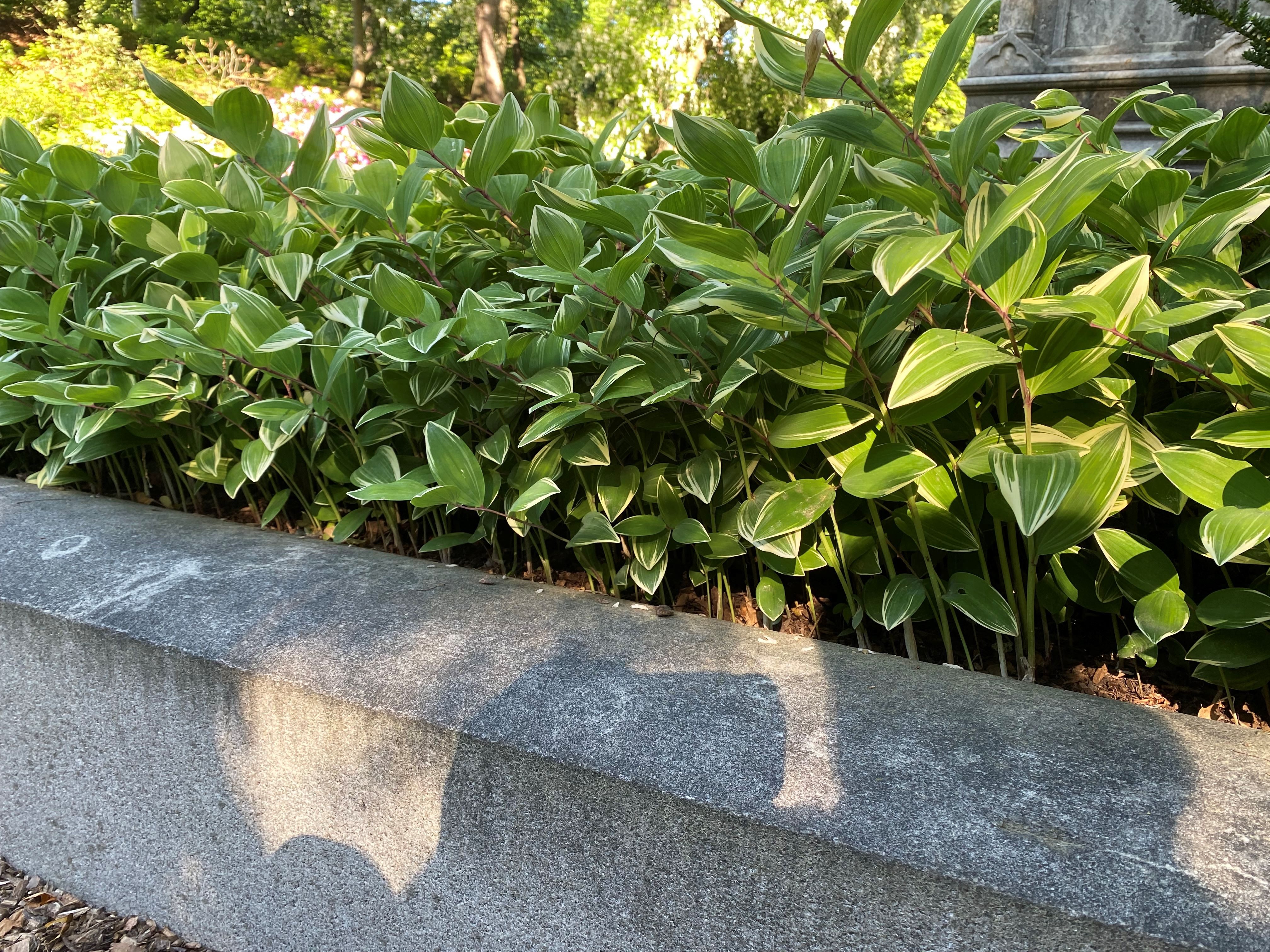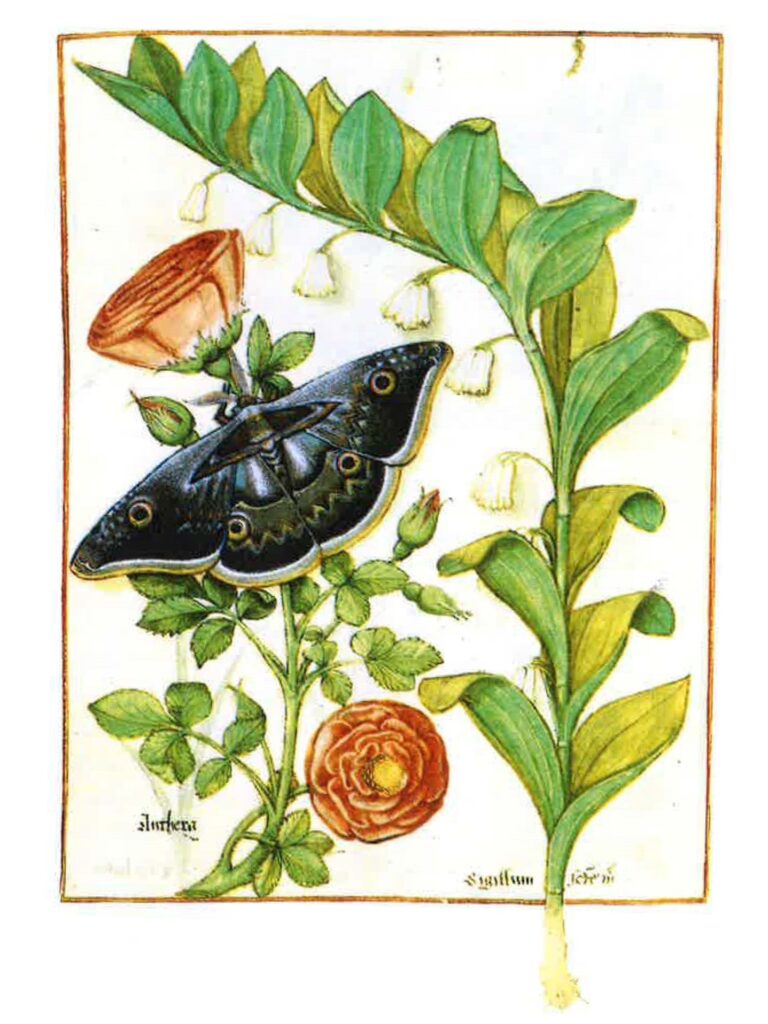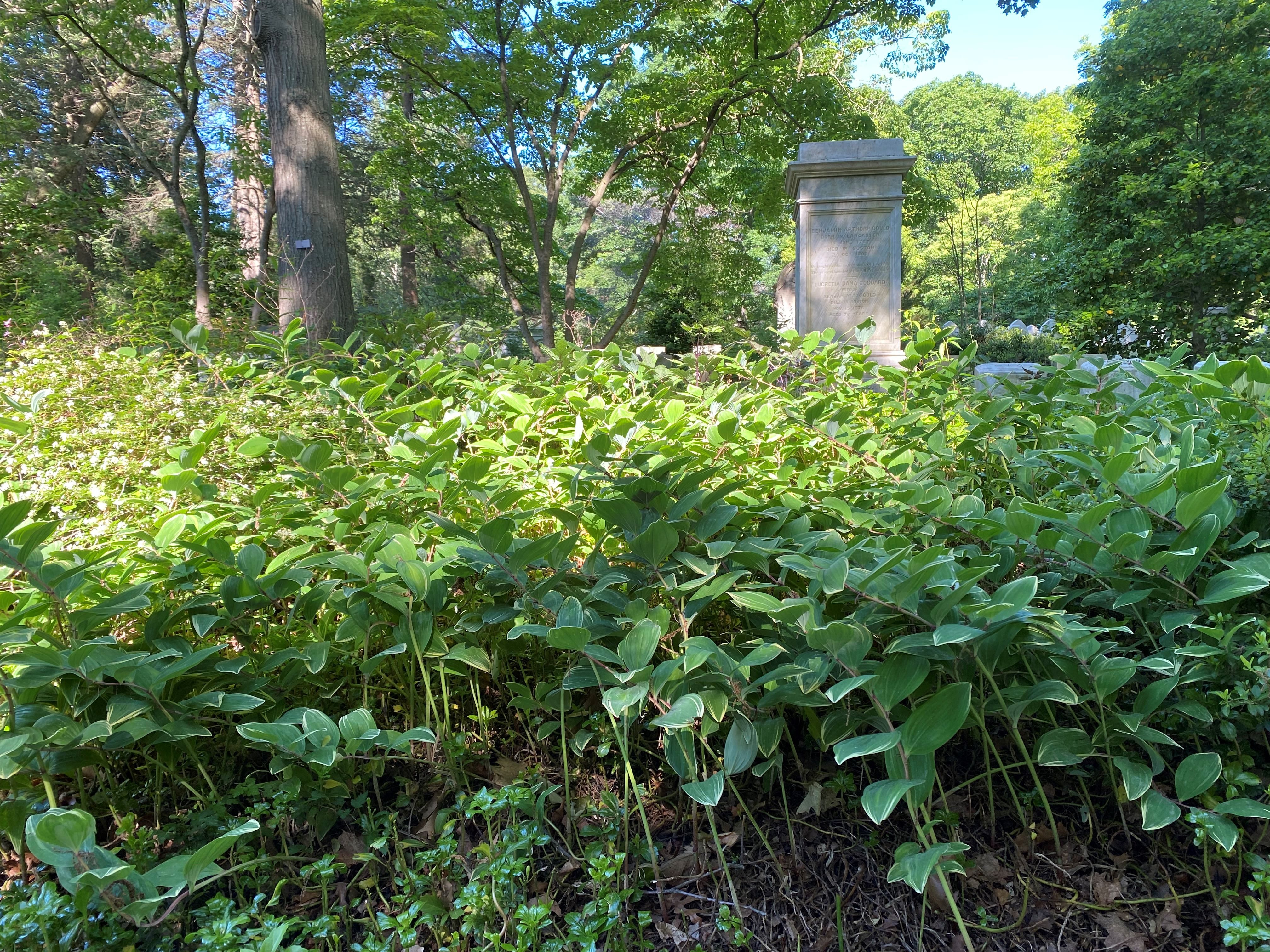Horticulture Highlight: Solomon’s Seal, Polygonatum spp.
Jim Gorman June 3, 2025 Plants & Wildlife

Today in the early June woods
Marge Piercy
the green surged around us, rustling
at full reach, the water at high
tide in every stem and leaf…
Mount Auburn’s living collection includes notable abundant diversity. Our recent 2024 Plant Collections Analysis documents a total of 20,392 plants or massed plantings which represent 2561 different plant taxa, within 492 genera from within 128 botanical families. If Horticulture Highlight discussed one different genus every month, that would take 41 years to present an overview to the current living collections. One genus per week would take 9 ½ years. Of course, our continuing efforts to diversify the collections should anticipate newer genera would be added as well.
Names aid us in distinguishing and remembering our friends, popular personalities, places and many other things. One of the best ways to get to know a plant is to learn its name(s). Each plant has a common name and a scientific name. The scientific name, or binomial, is composed of the genus (plural, genera) and the specific epithet. These two names together form the species name.
Herein we discuss Solomon’s-Seal, Polygonatum spp. The genus is comprised of over 60 species native across the Northern Hemisphere of Asia, Europe and North America. At Mount Auburn you may find at least three different species, Great Solomon’s Seal, Polygonatum commutatum, Dwarf Solomon’s Seal, Polygonatum humile, and a Solomon’s Seal cultivar, Polygonatum odoratum ‘Variegatum’.
Each of these species have in common that they will survive in full shade or partial shade. These are herbaceous plants maturing with a single, unbranched, long, graceful arching stem. Its light-green, alternately arranged, smooth edged, parallel veined leaves when in clumps combine well with other perennials and ferns. Solomon’s Seal cultivar, Polygonatum odoratum ‘Variegatum’has beautifully variegated leaves with cream white edges and tips.
From early to mid-spring, beneath the leaves hang little clusters of approximately one-inch, greenish-white tubular flowers, with fused sepals and petals, mildly fragrant, hanging downward.
Summer transforms them into inedible blue-black fruits. Referring to Henry David Thoreau’s Journal dated August 26, 1856 he notes, “…I found the Polygonatum berries on its handsome leafy stem recurved over the hillside, generally two slaty-blue (but darker green beneath the bloom) berries on an axillary peduncle three quarters of an inch long, hanging straight down; eight or nine such peduncles, dividing to two short pedicels at end, the berries successively smaller from below upwards….” Another Thoreau fruit citation from August 1, 1860, “See a berry (not ripe) of the Solomon’s-seal dropped at the mouth of a mouse or squirrel’s hole, and observe that many are gone from these plants, as if plucked by mice.”

On a future visit to Mount Auburn look for some of our Solomon’s Seals at Asa Gray Garden, Birch Gardens, Consecration Dell and Fountain Avenue among other locations.
So, some tempestuous morn in early June,
Matthew Arnold
When the year’s primal burst of bloom is o’er,
Before the roses and the longest day-
When garden-walks and all the grassy floor
With blossoms red and white of fallen May…




Comments
Comments for this post are closed